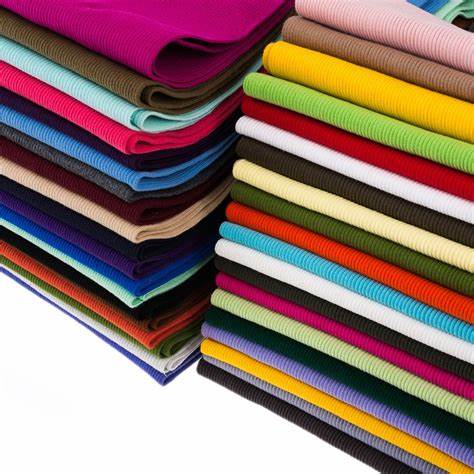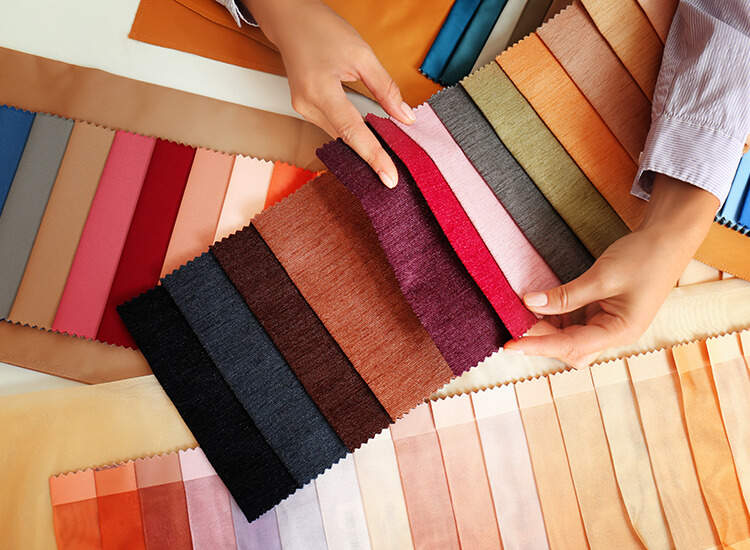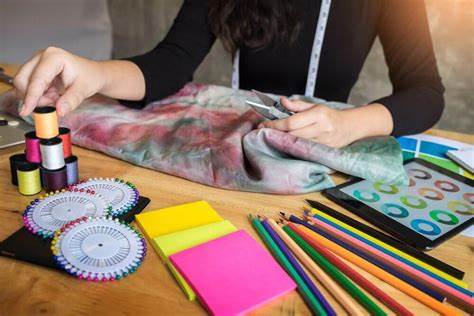Discover everything you need to know about knitted fabric, including its types, properties, and applications. This comprehensive guide is perfect for anyone interested in learning more about this versatile material.
Introduction
Knitted fabric is a versatile material that has been used for centuries to create a wide variety of garments, accessories, and household items. Knitted fabrics are made by interlocking loops of yarn or thread, and they can be produced in a variety of ways, including weft knitting, warp knitting, flat knitting, and circular knitting. In this comprehensive guide, we’ll explore the different types of knitted fabric, their properties, applications, and care instructions.
Types of Knitted Fabric
Knitted fabrics are created through the process of knitting, where yarns are interlaced to form a fabric. There are four main types of knitted fabrics, each with its own unique characteristics and uses.
- Weft knitting: This is the most common type of knitting and creates fabrics that are soft, stretchy, and flexible. Weft knitting involves knitting rows of yarn horizontally, creating a fabric that can stretch and move with the body. This type of knitting is commonly used for clothing such as t-shirts, sweaters, and leggings.
- Warp knitting: Warp knitting creates fabrics that are stronger and more stable than weft knitting. This type of knitting involves knitting rows of yarn vertically, creating a fabric that can resist stretching and is more durable. Warp knitting is commonly used for clothing such as jackets, pants, and skirts.
- Flat knitting: Flat knitting produces fabrics that have a more tailored, structured look than weft knitting. This type of knitting involves knitting rows of yarn in a flat, rectangular shape, creating a fabric that is less stretchy than weft knitting. Flat knitting is commonly used for clothing such as sweaters, cardigans, and hats.
- Circular knitting: Circular knitting creates seamless, tubular fabrics that are stretchy and flexible. This type of knitting involves knitting in a circular motion, creating a fabric that is continuous and has no seams. Circular knitting is commonly used for clothing such as socks, hats, and scarves.
In summary, the four main types of knitted fabrics are weft knitting, warp knitting, flat knitting, and circular knitting. Each type of knitting has its own unique characteristics and uses, and the choice of knitting method depends on the desired properties of the fabric and the intended use of the garment.
Properties of Knitted Fabric
Knitted fabric has several unique properties that make it an attractive choice for clothing, accessories, and household items. One of the most notable properties of knitted fabric is its stretchability, which allows it to conform to the shape of the wearer’s body. Knitted fabric is also durable, soft, and comfortable to wear. Additionally, knitted fabric can have a range of textures, from smooth and silky to fuzzy and fluffy. Depending on the fibers used to make the fabric, it can also provide warmth, breathability, and moisture-wicking properties.

Applications of Knitted Fabric
Knitted fabric is a versatile material that is used in a wide range of applications, including clothing, accessories, home textiles, and industrial products. Its unique properties, such as stretchiness, softness, and breathability, make it an ideal choice for various uses.
In the fashion industry, knitted fabric is used to create a variety of clothing items, from lightweight summer tops to heavy winter coats. It is also used to make accessories such as socks, hats, scarves, and gloves. The stretchiness of knitted fabric allows for a comfortable fit and movement, making it a popular choice for clothing that needs to fit snugly, such as activewear and swimwear.
In the home, knitted fabric is used for blankets, throws, and decorative pillows. Its softness and warmth make it a cozy addition to any living space. Knitted fabric can also be used to create decorative items such as wall hangings, table runners, and coasters.
In the industrial sector, knitted fabrics are used for filters, insulation, and protective clothing. The durability and strength of knitted fabric make it an ideal choice for these applications. For example, knitted fabric can be used to create filters that are used in various industries, such as air and water filtration. It can also be used to create insulation for buildings and other structures, providing a layer of protection against heat and cold. Additionally, knitted fabric can be used to create protective clothing, such as gloves and masks, that are used in various industries, such as construction and healthcare.
Overall, knitted fabric is a versatile material that is used in a wide range of applications, from clothing and accessories to home textiles and industrial products. Its unique properties make it an ideal choice for various uses, and its durability and strength make it a reliable material for a variety of industries.
How to Care for Knitted Fabric
To keep your knitted fabric looking and feeling its best, it’s important to follow the proper care instructions. This typically involves washing the fabric in cold water, using a gentle detergent, and laying it flat to dry. Avoid hanging knitted fabric to dry, as this can cause it to stretch out of shape. Additionally, it’s important to avoid ironing knitted fabric, as this can also cause it to lose its shape.
Conclusion
Knitted fabric is a versatile and durable material that is used in a wide range of applications. Whether you’re looking for a soft, stretchy fabric for your next garment or a cozy blanket to curl up with on a chilly evening, knitted fabric has something to offer. By understanding the different types of knitted fabric, their properties



